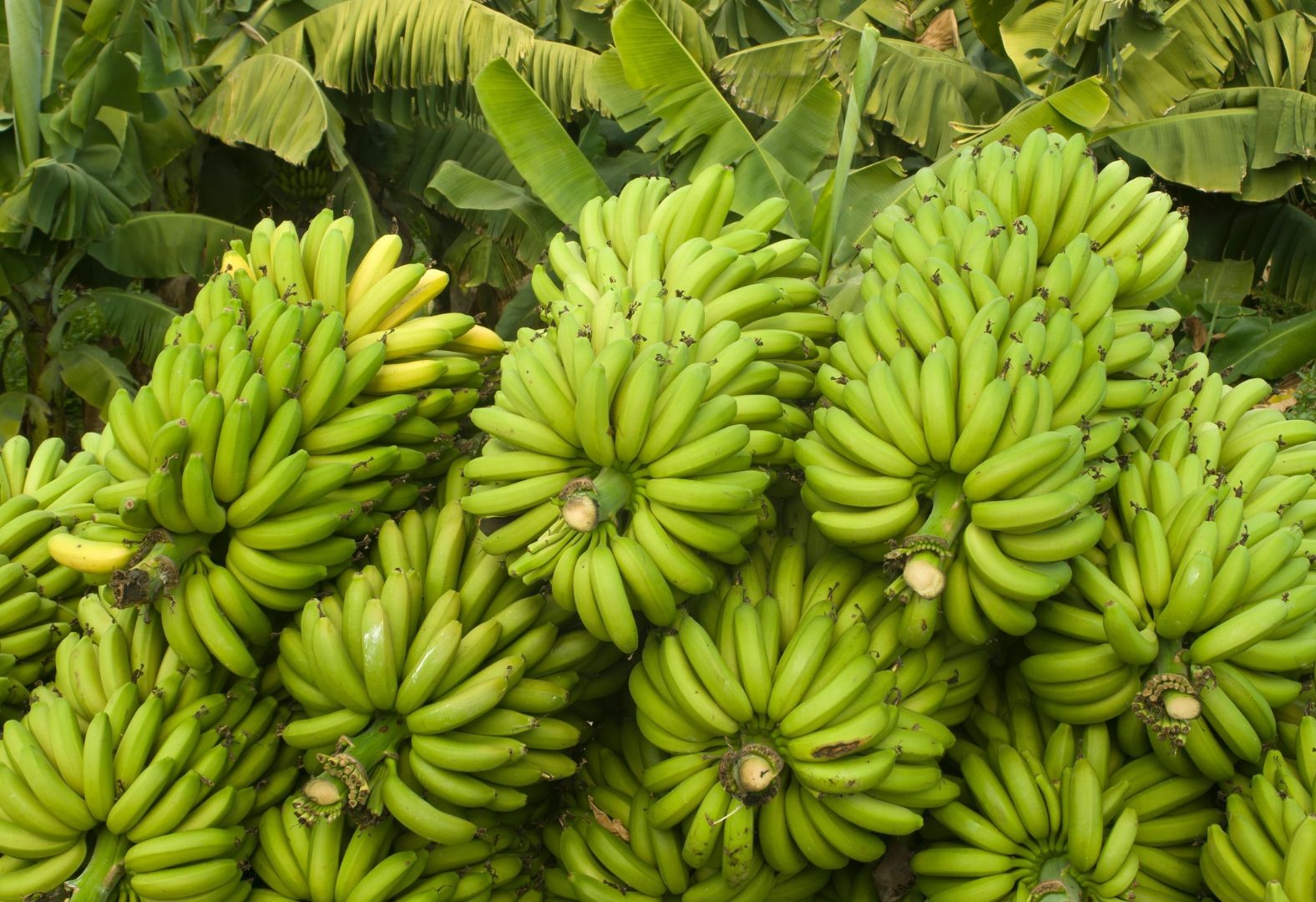Banana: Crop History, Nutritional Value and Health Benefits

This post is also available in:
This post is also available in:
![]() Español (Spanish)
Español (Spanish) ![]() Français (French)
Français (French) ![]() Deutsch (German)
Deutsch (German) ![]() हिन्दी (Hindi)
हिन्दी (Hindi) ![]() العربية (Arabic)
العربية (Arabic) ![]() Türkçe (Turkish)
Türkçe (Turkish) ![]() Português (Portuguese (Brazil))
Português (Portuguese (Brazil))
Banana Crop History
While many people consider the banana plant a tree, it is actually a herb distantly related to ginger. This is because the banana plant has a succulent tree stem instead of a wooden one.
Bananas were first grown in Southeast Asian jungles. Most people believe that bananas originated in Malaysia because of the large variety of bananas found there. It is likely that they were the first fruit to be farmed by humans. Bananas were brought to the Americas by Spanish explorers in the 1500s. The first banana shoot is thought to be planted on the islands of the Caribbean in 1516. Bananas did not make their way to the U.S. until the 1800s when sailors brought banana shoots home from the Caribbean. They were first sold for 10 cents in 1876 at the Philadelphia Centennial Exhibition. Today, bananas are shipped to the U.S. from Central and South America.
It is believed that the Malayan Peninsula, Indonesia, the Philippines, and New Guinea are where the first bananas were produced. According to some horticulturists, bananas may have been the planet’s first fruit. They are thought to have originated in Malaysia’s jungles in Southeast Asia. Philippines or Indonesia. Where numerous species of wild bananas are still present. Although the term “banana” is derived from the Arabic for “finger,” Africans are often credited for giving the current moniker.
By the end of the fourteenth century, trade in bananas had begun globally. Bananas are now the world’s most traded fruit, thanks to railroad construction and technological advancements in refrigerated sea transport.
Historically, bananas were primarily a subsistence food crop. By the end of the 19th century, they started being produced for export and appearing as expensive foods in international markets. Davies (1990) reported that in 1905 bananas had become the most popular fruit in the United Kingdom, ahead of oranges, apples, or tomatoes. Market penetration has continued throughout the past century, so today bananas are considered a staple rather than a luxury food item. With the breakup of the former USSR and its allies, bananas were imported and became widely available in those formerly closed markets for the first time. This made bananas the symbol of open international commerce. Bananas are and have always been a basic foodstuff in tropical countries.
Around 327 B.C., Arab conquerors transported them to the West. Moreover, bananas were transported from Asia Minor to Africa, then by the first explorers and missionaries to the Caribbean to the New World. Banana production began in large quantities around 1834, but it was finally kicked off in the late 1880s.
Uses and Nutritional Value of Banana
Bananas contain about 74% water, 23% carbohydrates, 1% protein, and 0.5% fat. A 4-ounce banana without the peel is a good vitamin B6, potassium, and fiber source. One medium ripe banana has one serving, or 110 calories, 0 grams of fat, 1 gram of protein, 28 grams of carbohydrates, 15 grams of naturally occurring sugar, 3 grams of dietary fiber, and 450 milligrams of potassium.
Banana is a good source of;
Vitamin B6, Fiber, Potassium, Magnesium, Vitamin C, and Manganese.
Banana Health Benefits
- Rich in nutrients
- Improve blood sugar
- Support digestive health
- Weight loss
- Support Heart Health
- Full of antioxidants
- Help feel fuller
- Improve Insulin sensitivity
- Improve kidney health
- Support exercise recovery
- Easy to add to a diet
Some side effects of eating too many bananas may include bloating, gas, cramping, softer stools, nausea, and vomiting. In very high doses, bananas might cause high blood levels of potassium.
The banana is the most important food crop, commonly consumed fruit, and the most popular fruit in South East Asia.
This fruit is consumed mostly as a snack and part of the dietary plan of most Filipinos. Furthermore, it can be considered a staple food for us. The famous banana cue, Banana chips, Banana powder, Banana biscuit and banana juice, and the famous Banana cake are the common uses of this fruit.
The Cavendish is the most grown variety in the Philippines. This type of banana is slightly sweet and has a creamy texture. The Cavendish cultivars are grown in fields of different sizes for domestic and export markets and a small amount for home consumption.
Statistically, The Philippines is the second major exporter of bananas in the world. Moreover, fruit plays a great role in the country’s economy. The increasing demand worldwide for the Philippine Banana has resulted in greater expansions of the area here in our country.
References
- https://dpi.wi.gov/
- https://fdc.nal.usda.gov/fdc-app.html#/food-details/1105073/nutrients
- https://www.usaidgems.org/Documents/LAC_Guidelines/docs/Bananas.pdf
- https://community.plu.edu
- https://www.hsph.harvard.edu
Further reading
Banana: Crop History, Nutritional Value and Health Benefits
Banana Plant Information & Environmental Requirements
Banana Plant Care – Commercial Cultivation of Bananas
Soil Requirements and Land Preparation for Bananas
Banana Planting Distances and Support Systems
Banana Water Requirements & Irrigation Systems
Banana Nutrient Requirements and Fertilization Program
Banana Plant Protection – Major Banana Diseases
Banana Plant Protection – Common Pests of Banana Plants









































































